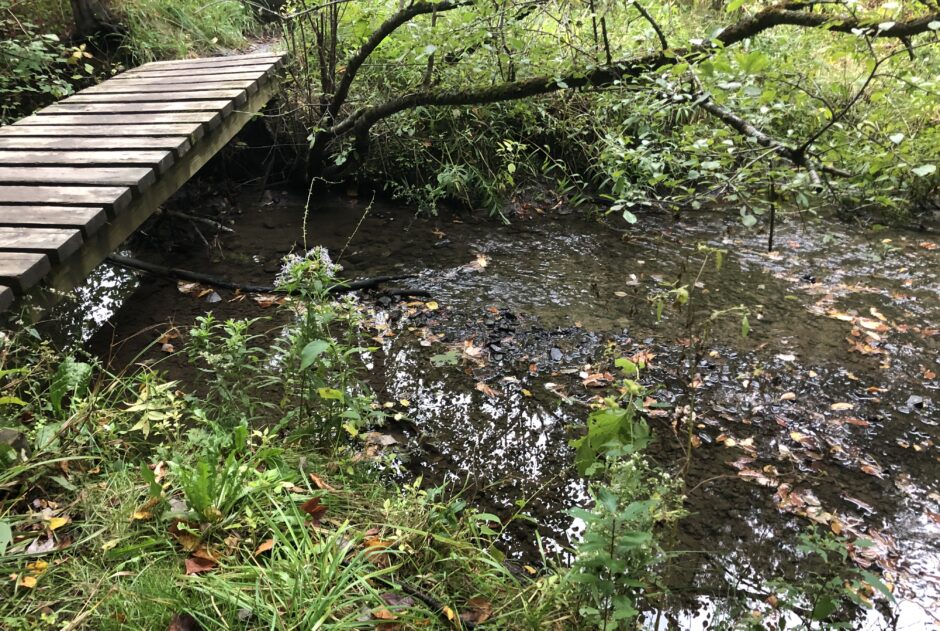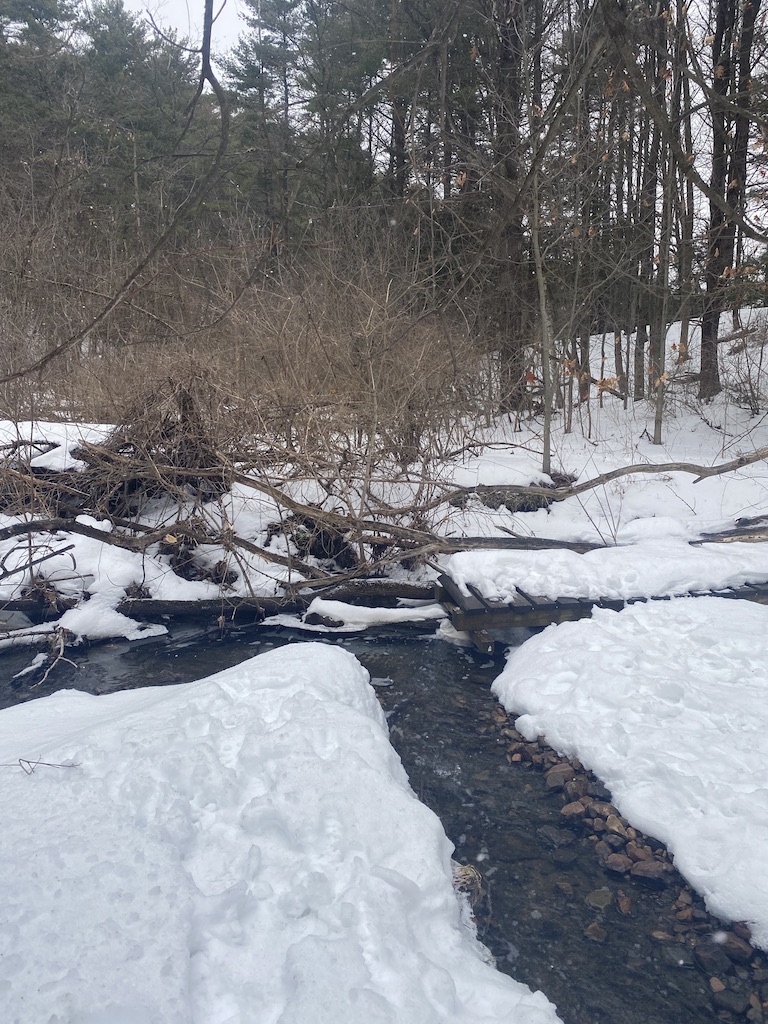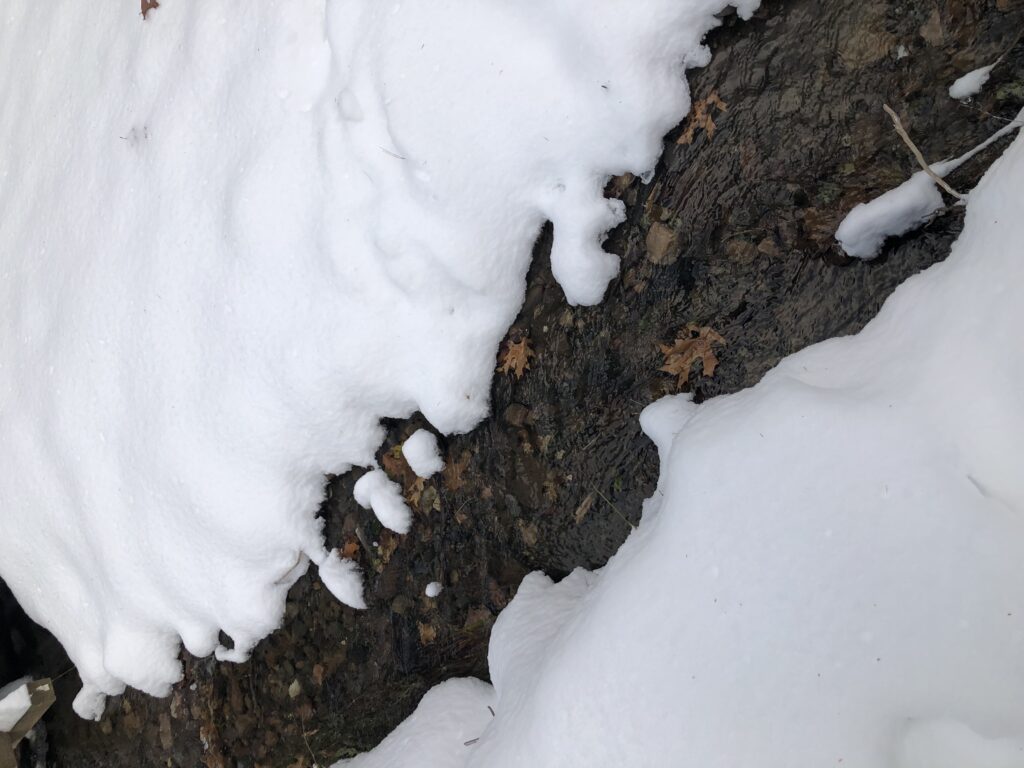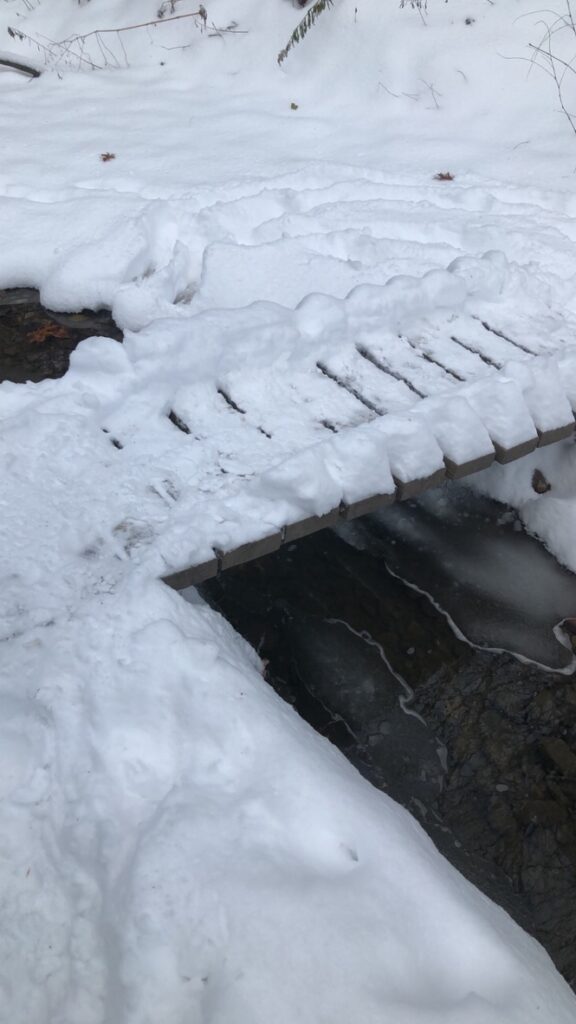-
Recent Posts
Recent Comments
Archives
Categories
Meta
February: Survival
There are not many evident changes at my site since I last visited in January. Snow cover is still covering all understory plants, and almost no wildlife is present to my eye. The direction of the brook seems to have changed slightly along with the positioning of the bridge most likely due to differing storm conditions.
Wildlife Activity
While exploring the Centennial Woods Brook area, I came across this unidentified tail. I have since come to the inclusion that this tail most likely belonged to an Eastern Coyote. This species can survive in a variety of habitats including agricultural, urban, wetland, and forested areas (Vt Fish and Wildlife, n.d.) They favor a mixture of hard and softwood forests which makes sense of why the tail is present in Centennial Woods. The Eastern Coyotes predators include wolves, mountain lions, and humans, but it doesn’t seem as though these would’ve been the cause of the tail detachment and/or potential death. Nighttime is prime predation time for these Eastern Coyotes. Coyotes reproduction period is in February and the species actually mates at night as well. The Coyote is more successful in predation at night, but they still continue to hunt throughout the day due to low calorie intake during the winter (Faber, S., 2017). Coyotes prey on deer fawn and more commonly deer carcasses, as well as smaller rodents during the winter months. There were no visible tracks so it is hard to determine what exactly this Coyotes interaction would have been with other animals. However, I can speculate that the Coyote interacted with a wolf or moose which drove it to its chase and therefore death.
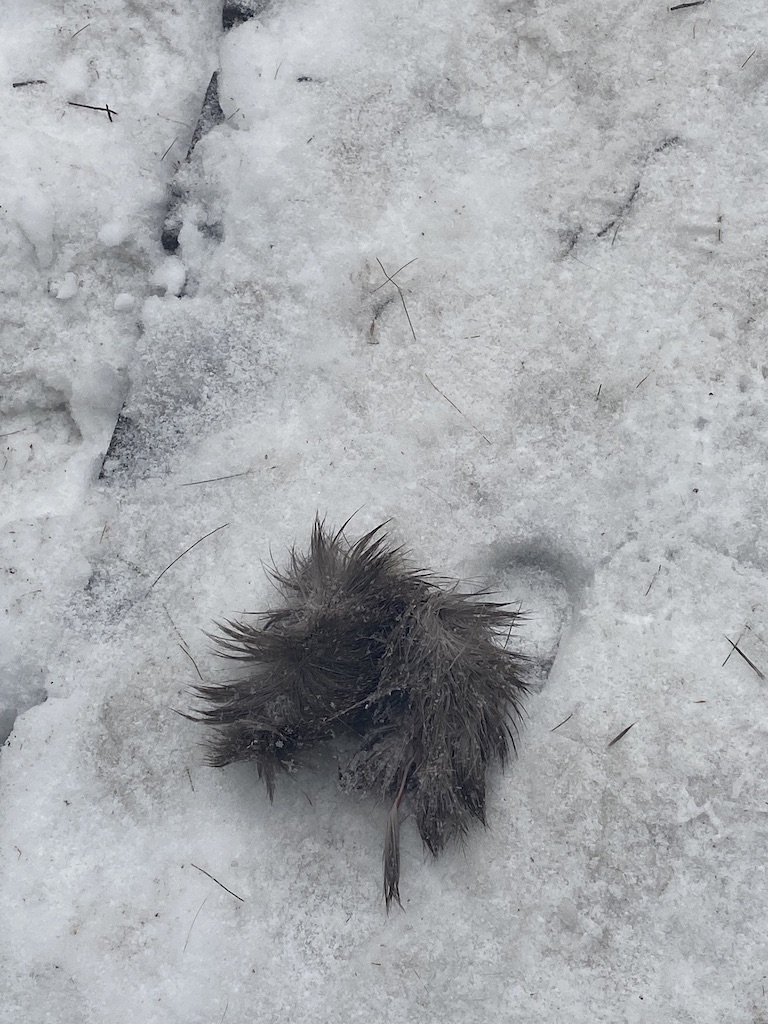
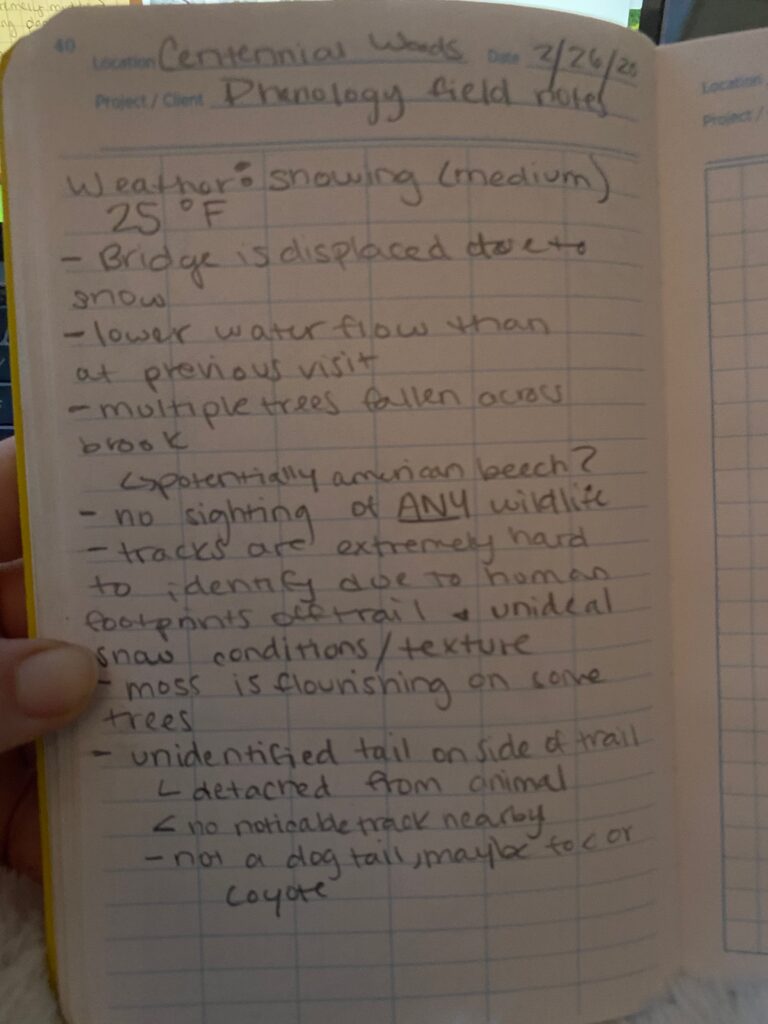
Posted in Uncategorized
Leave a comment
A different sense of place

I have lived in Asheville North Carolina since I was seven years old, after moving from Westport, Ct. My mother is a Asheville native as well as both her parents families. I attended the same elementary, middle, and high school as both my mother, all of maternal aunts and uncles, and my grandmother. In 2007, my mother and my three siblings uprooted and moved back south where our families root lay. We moved into a ranch style house and I have called it home since. Our ranch on Red Oak Road is right next to Beaver Lake, with spectacular views of Mt. Pisgah in the distance. I lived in a highly residential area, but just a mere 10 minute drive from downtown. The city of Asheville is settled in a valley inside the Blue Ridge Mountains of Western North Carolina. The mid sized city of 80,000 has grown rapidly over the past decade, and is a popular tourist destination and draws people from all around the US who are looking for a “weird”, liberal city with an abundance of craft beer, art deco architecture, farm to table restaurants, America’s largest private home the Biltmore House, and it’s access to spectacular outdoor adventure in the Blue Ridge Mountains, and surrounding national parks and forests.
Asheville is an oasis of liberal, progressive attitudes, acting as a blue dot in the middle of a surrounding red region and state. Over the years one of the most popular bumper stickers and informal slogans has been “Keep Asheville Weird”, a line that resonates with locals and speaks to one of the unique qualities of the city that has made it the tourist mecca that it is. The “Land of the Sky” will always hold…
Asheville has been a hub of activity in western North Carolina since the mid 1800’s, as it served as a passage of commerce from the eastern part of the state over to Tennessee, starting out with farmers and their herds, and later progressed into a railroad passage. The city has not always been so peaceful and unified, and it was actually a Confederate Military Base for years. This legacy still continues on today, as one of the most iconic symbols of downtown is the towering Vance monument, honoring a confederate general. I feel that these parts of the cities past do have a affect on the way I feel when I am home, in the sense that there is a history of segregation, race riots, and ultimately slavery whose sentiments are still in the air in some ways. The new growth in the city has also led to some significant gentrification in low income neighborhoods that are often where minorities live. These aspects of Asheville certainly have a negative affect on my sense of place, in that I know there are still many current inequalities in the city because of said historical legacies.
I feel extremely grateful to have grown up in such a liberal town that celebrates inclusivity and individuality, along with endless opportunities in the outdoors as well as having a vibrant cultural and historical scene. Over time, the most conservative residents, most of which who are still in support of keeping things like the Vance monument in place, have moved outside of the city limits to rural areas. When looking at a political map, there is a dramatic change in party affiliation once you exit the city limits. While these conservative minded voices still have some presence within the city, my own local government during my lifetime has always been a very democratic one, paralleling my own affiliation and values well.

I grew up hiking and camping almost every weekend and all summer with family and friends. As a teenager, newfound independence often came alive in the planning of backpacking trips on the nearby Appalachian Trail with close friends, or rock climbing for the day at Looking Glass Rock. I actually spent the fall semester of my sophomore year of highschool at a semester school in Pisgah National Forest that was based on experimental learning and exploration of the natural world. The four months I spent in the forest were formative in my development of a deeper sense of place to the region in which I grew up in. I learned about land use history and current environmental degradation challenges in Asheville and the risks and dangers posed against my beloved mountains and forests. My sense of solastalgia is growing stronger every year as the effects of climate change creep into the landscape. Our winters have become much shorter and we hardly see any snowfall anymore. I cannot swim in the River I grew up rafting and swimming in because of the high levels of fecal matter from toxic waste dumps. I have not been allowed to run outside because of nearby burning fires in Smoky Mountain National park. I am used to seeing bears in my front yard and searching the trashcans for food at every house on my street, all because of habitat displacement caused from population growth. I am sad for the animals, for the rivers, and for my beloved mountains. They are undergoing fast changes that will not be reversed. My sense of place is wide and powerful and deep, and I don’t want to feel it dwindle away. I will always have a great love for the city and appreciation of all it offers. However, I no longer hold the dissolution that tourists were simply good for the local economy, and that development and sprawl represent positive growth. I have witnessed the city change dramatically over the past decade that I have lived in the area, which pales in comparison to the sense of place my mother and grandparents have in our home. We all care, but all have differing concerns, mine including climate change at the top of the list.
I feel that the environment I grew up in definitely shaped me into who I am today. A progressive, outdoor enthusiast, environmental steward, foodie, who loves her hometown. I feel privileged to have grown up where I did, and learned in the places I did. I have heard and seen opposing political and cultural voices, and have seen them also celebrate together in the natural beauty of our mountains. At some point in the past year I came to the important realization the environmental activism does not have to be a solely liberal activity – and it shouldn’t be. It should include all voices and backgrounds of those living in Asheville, the longtime natives, the engaged youth, and everything in between. I have a hope for the future that polar opposite political attitudes can come together in the overall preservation of the natural areas in WNC, because the reality is that the liberal city center only represents a portion of the overall region that needs hopeful and active people speaking and standing up for it. The focus of an environmental movement I believe should not be limited to the city, because surrounding rural areas are often contributing higher emissions than the condensed city center. In order to preserve my sense of place, and to keep a positive place meaning, I think all residents in the county, not just city, need to make collective, inclusive, urgent change.
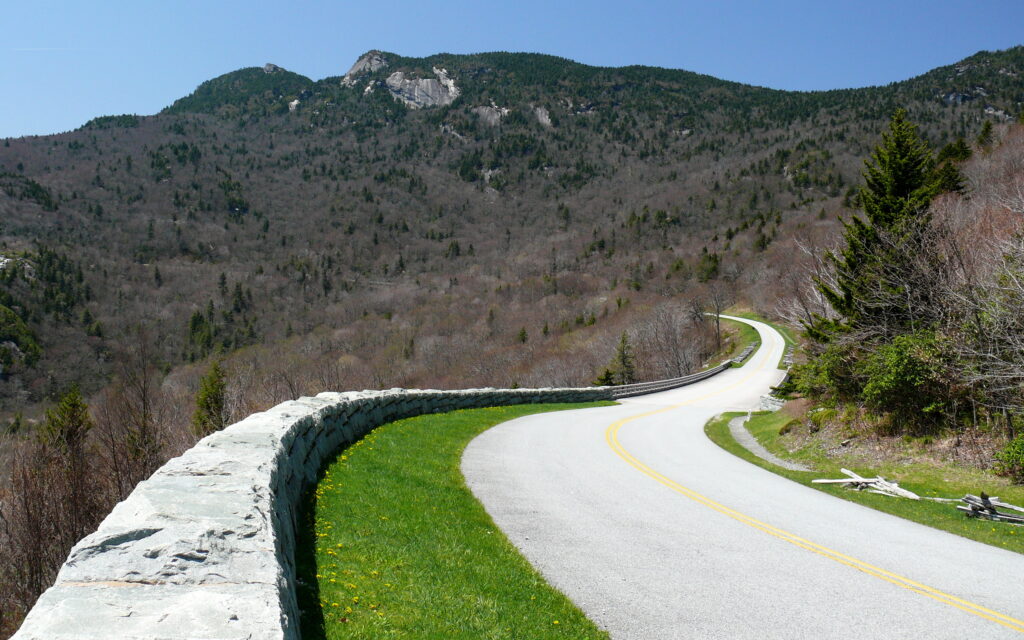
Posted in Uncategorized
Leave a comment
Sense of Place
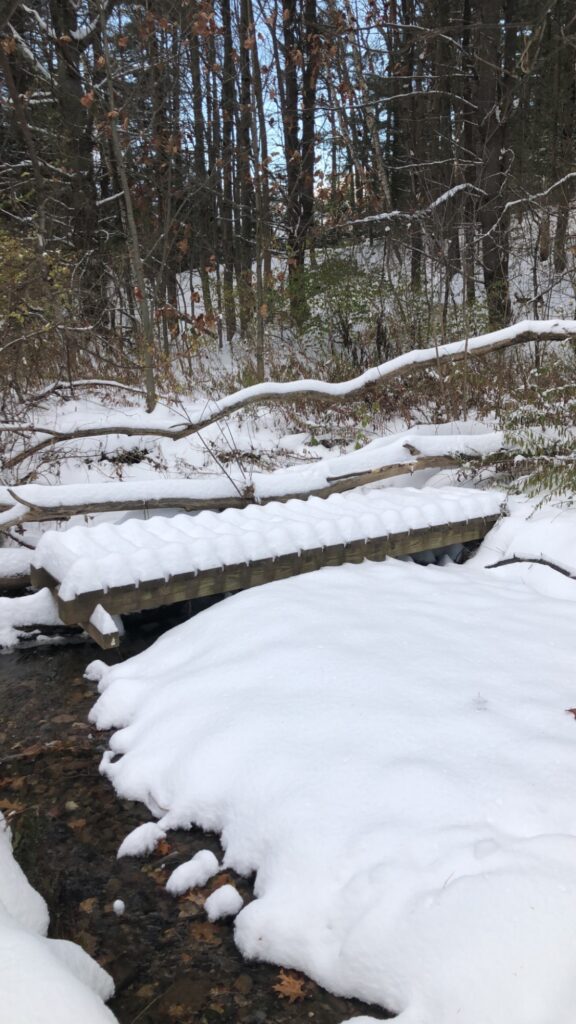
My relationship with Centennial woods is both academic and recreational. I have gone to my site on multiple occasions for classes, labs, and just to enjoy a forested area so close to campus. For myself, the brook in these woods has been a setting for relaxation, contemplation, and curiosity. As the seasons have changed, simply the way I can exist in this place has changed. The brook once flowed, the bridges were crossable, and there was much more foot traffic. Today, the water is frozen over, and the brook is almost unrecognizable. It has stayed beautiful throughout the transitions, but the habitat evokes very different feelings than it did in October.
The most prominent feature of Centennial Woods in my own definition of sense of place, is the fact that it provides dozens of acres of forest right in the city of Burlington. I value these woods for the escape they provide, a glimpse of serenity in the fast paced day to day life. I have a strong sense of place here because I have always valued landscapes similar to these woods, and have always spent a great deal of time in them. I feel strongly tied to Vermont because of its natural landscape, that being a majority forested region. Knowing that these woods were once agricultural land and sheep grazing lands, I do not think I could’ve felt as connected to this location during those times.
During a period of logging, grazing, and decimation of regional and state wide forests and soils, I honestly do think I would’ve felt like what society was doing with the land benefitted me. During that time, land was valued higher when it was modified to meet the needs of production. Today, Centennial Woods is still a productive place, but in a very different way.
Centennial woods is becoming a place that is increasingly contaminated from impervious surface runoff, encroaching buildings and major roadways that increase the “edge effect”, as well as power lines and runoff ponds. These woods are slowly shrinking from a variety of human land use practices, but fortunately UVM donated the rights of the woods to the Vermont Land Trust so that they should be conserved indefinitely.
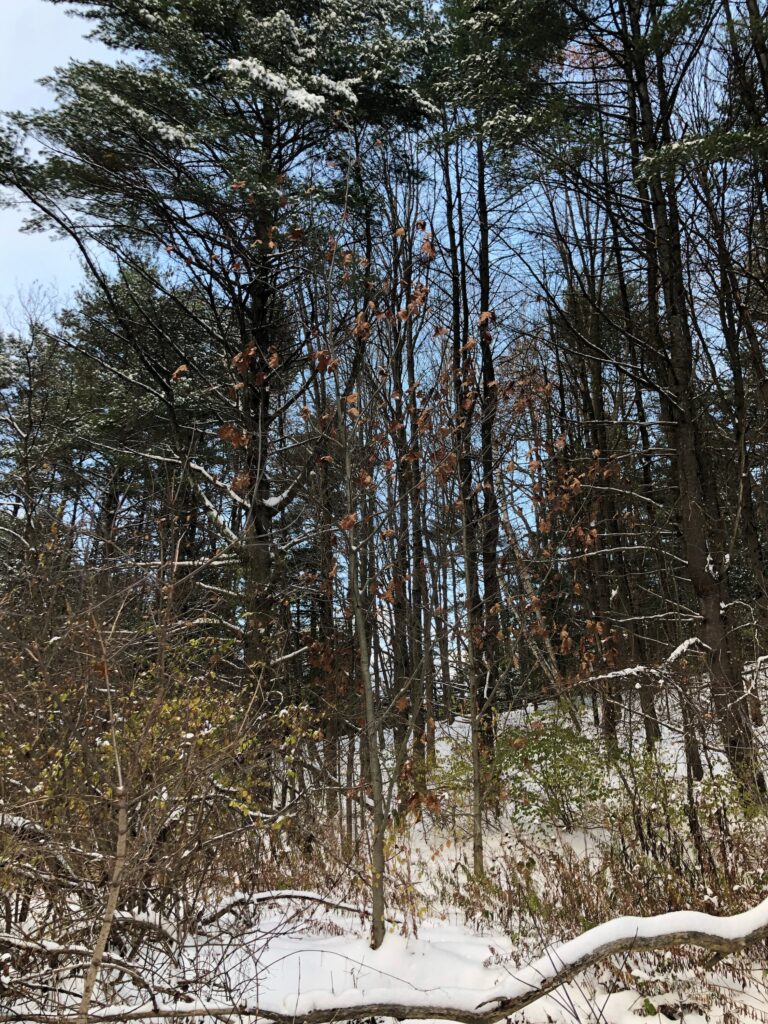

Field notes 
Field Notes Cont’d
Posted in Uncategorized
Leave a comment
Mapping and Charismatic Species
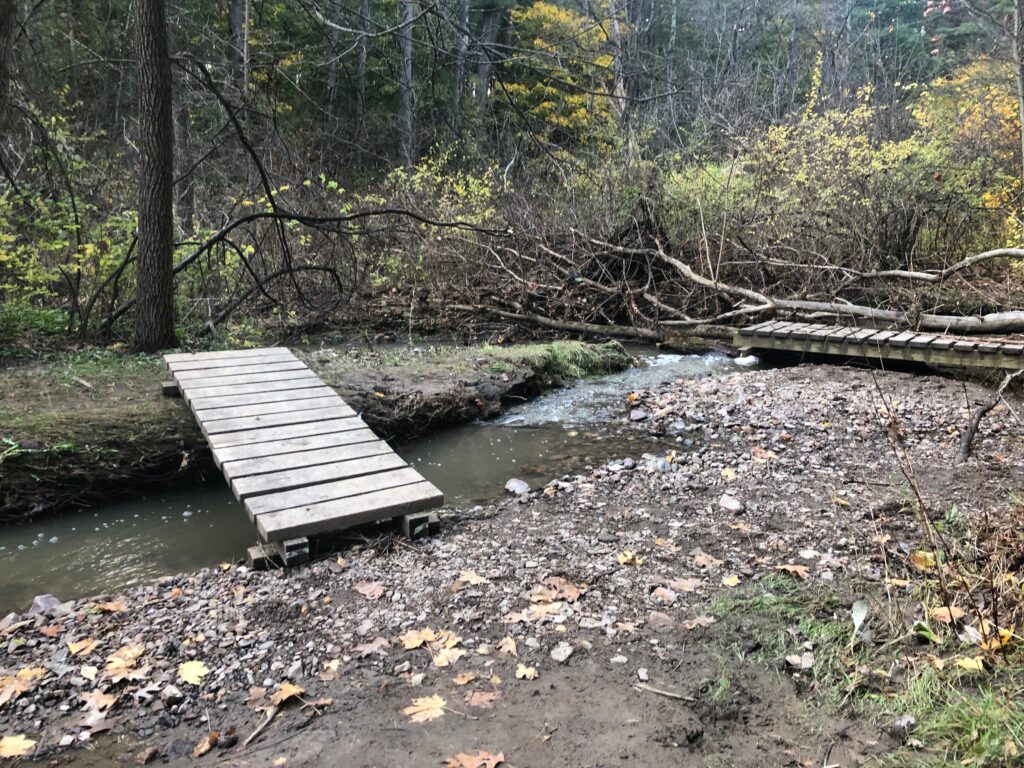
I noticed significant changes at Centennial woods during my trip to the brook today. The night before I visited the brook, there were torrential downpours and flooding across the city of Burlington. Centennial woods collects much of the runoff from the city because it is downhill, so there was significantly higher water levels. The bank of the brook had been eroded a couple feet, creating a vertical drop among the side of the brook. Most of the vegetation was browning or had begun to die off. The majority of the trees had lost their leaves, except the eastern white pine stand of course. The Oaks, Ash’s, and Maples have all lost their leaves to litter among the forest floor.The Red Maples red leaves have fallen, with the exception of a few lingering young trees with their yellow leaves. In the trees, all the cholorphil has broken down, and the presence of green leafs reside in the understory. The wood ferns, blue cohosh, and buckthorn, and various grasses along the brook represent the lingering effects of fluctuating autumn temperatures. Mapping the site based on memory was an interesting test to see what parts of my site were important to me, what I truly remembered. Then going on to the site, I realized much of what I have forgotten, but also the significance of what I did remember. The changes in falling leaves and water levels are the most prominent in my memory, but the detailed report of flora life was exposed through thinking about what species define the brook at this time of year and adding them to my map. Going forward, I think I will look to these key defining species in not only looking at they change through the oncoming winter, but how the health of them changes in general with different weather and land usage patterns.
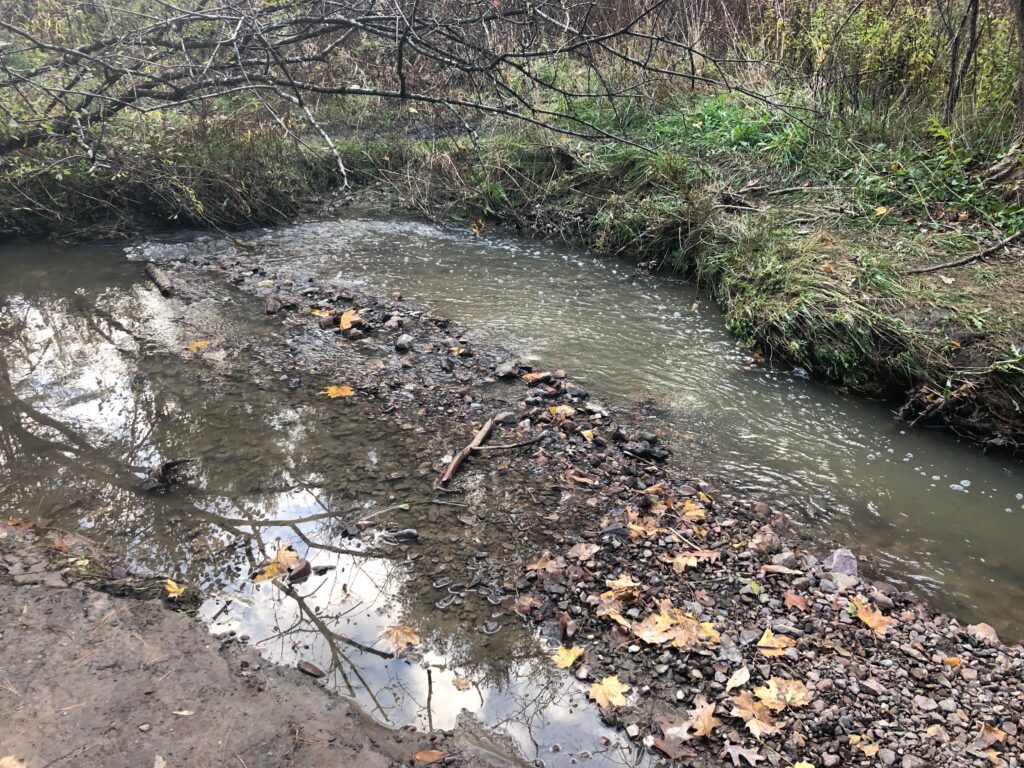


Posted in Uncategorized
Leave a comment
Hello world!
Welcome to UVM Blogs. This is your first post. Edit or delete it, then start blogging!
Posted in Uncategorized
1 Comment
